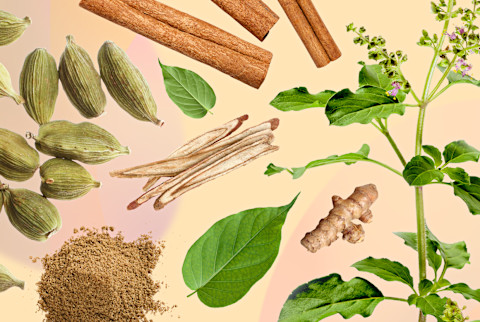How Learning About Herbal Monographs Inspired Me To Write About Food

Human beings, plants, and the environment have been pulsing in unison since the start of our collective history. The botanical realm has always surrounded us, and it was perhaps becoming aware of this powerful synergy that led me to a new school of wellness: herbalism.
I've been drawn to indigenous botany and the broad spectrum of potential benefits since I was young. Growing up in Costa Rica instilled in me a deep affinity for herbal remedies, how they work in the human body, and, most fascinatingly, how they can promote health. I learned that while many herbs (plants, seeds, roots, trees, or fruits) may soothe the mind and the body, lifestyle habits and optimal nutrition are equally powerful in advancing well-being.
Still, it wasn't until I started learning about and drafting my own herbal monographs that the power of food became even more clear. More than an organizational and informative tool, herbal monographs allowed me to tune into my passion for food—or should I say, the potential of food as medicine—informing both what and why I write in the well-being space. For my highly visual, organized mind, reading an in-depth piece on a single herbal topic helped me deepen my understanding of plants and food alike.
What is an herbal monograph?
According to Therapeutic Use of Medicinal Plants and Their Extracts1, an herbal monograph is "a document that describes a botanical drug and provides information that allows for its proper identification. It contains the basic description, including nomenclature, parts used, constituents, range of application, contraindications and side effects, incompatibilities with other medications, dosage, use, and action of the herb."
In other words, herbal monographs are a thorough, detailed look at a specific botany subject (also thought of as comprehensive scientific references2), covering herbal uses, actions, dosage, efficacy, energetics, and safety, to name a few.
Anatomy of an herbal monograph.
Although categories vary between botanical systems, herbal monographs typically involve the following sections:
- Chemical constituents
- History or folklore
- Uses
- Energy
- Harvesting and growing tips
- Traditional names
- Clinical uses
- Pharmacological research
- Modes of delivery
- Geographic distribution
- Combinations
- Dosage
- Botanical description
- Utilized parts
- Photos and drawings
- Taste (bitter, astringent, etc.)
- Applications (tincture, decoction, infusion, etc.)
- References
Why I find herbal monographs so influential.
Herbal monographs helped me better understand and articulate connections between herbs and food in a systemized, educational, and yet immensely creative way. For example, just because herbs come from the Earth doesn't mean they're all safe. Like other types of food, knowing how herbs interact in our bodies and address individual needs is vital.
Consequently, I was inspired to start my own personal food monographs with specific categories (historical background and taste being two of my favorites), photos, and recipes. These records help me find inspiration for my work as both a nutrition coach and food writer. And I have to say, I take great pride in my ever-growing collection of both food and herbal biographies.

